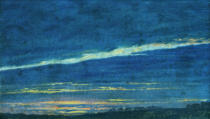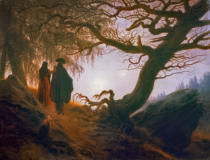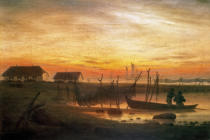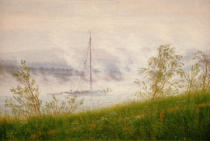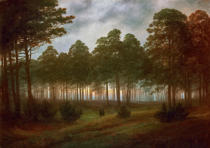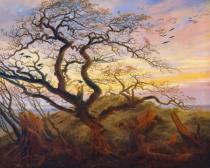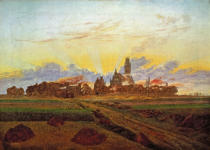Caspar David Friedrich
- Born: 5. September 1774 in Greifswald
- Died: 7. May 1840
Milestone of the Romantic art movement
Caspar David Friedrich was a German Romantic painter known for his distinctive landscape paintings and seascapes. He was born in Greifswald on September 5, 1774, and spent his childhood in humble circumstances. His mother died early, when he was seven, and his father, a soap boiler, was often absent.
Friedrich showed an early talent for drawing and painting and began his artistic training at the Royal Academy of Arts in Copenhagen in 1794, where he studied with the Danish painter Jens Juel and was influenced by the Nordic landscape and culture.
In 1798, Frederick moved to Dresden and joined the group of German Romantics. Here he found like-minded people such as Philipp Otto Runge and Johann Wolfgang von Goethe, who supported him in his quest for spiritual and emotional expression. Friedrich was also inspired by the landscape around Dresden and began to paint his characteristic landscape paintings, often depicting dramatic scenes or human figures surrounded by nature.
Friedrich's career, however, was marred by the deaths of his mother and brother and by a severe depression that forced him to take long breaks from painting. Nevertheless, he created some of his best-known works during this period, such as "The Arctic Sea" and "The Cross in the Mountains".
In 1810, Frederick married Caroline Bommer, with whom he had five children. His personal happiness was also reflected in his art, which now took on a warmer and more intimate mood, as in "The Family Portrait" and "Two Men in Contemplation of the Moon".
Caspar David Friedrich died in Dresden on May 7, 1840. His work, often misunderstood and criticized by contemporary art critics, later influenced artists such as Edvard Munch and Mark Rothko and is now considered a landmark of the Romantic art movement.
To our knowledge the art works on this page were created in the years from 1808 to 1835.
Caspar David Friedrich uses for the pictures shown here mostly the technique: Huile sur toile.
The pictures are predominantly assigned to the art direction Romanticism.
Caspar David Friedrich was mainly concerned with the following motives: Landscapes.
The art works of the artist are dominated by the colors pastel, gray and brown.
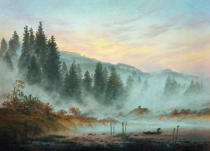


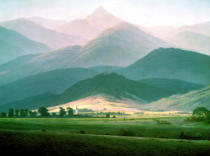
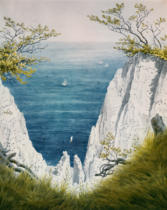

.jpg)

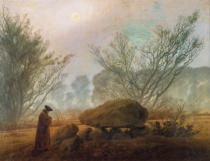

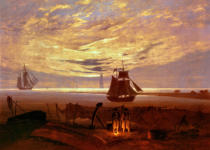
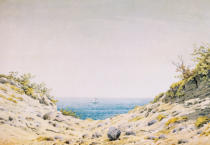
.jpg)


